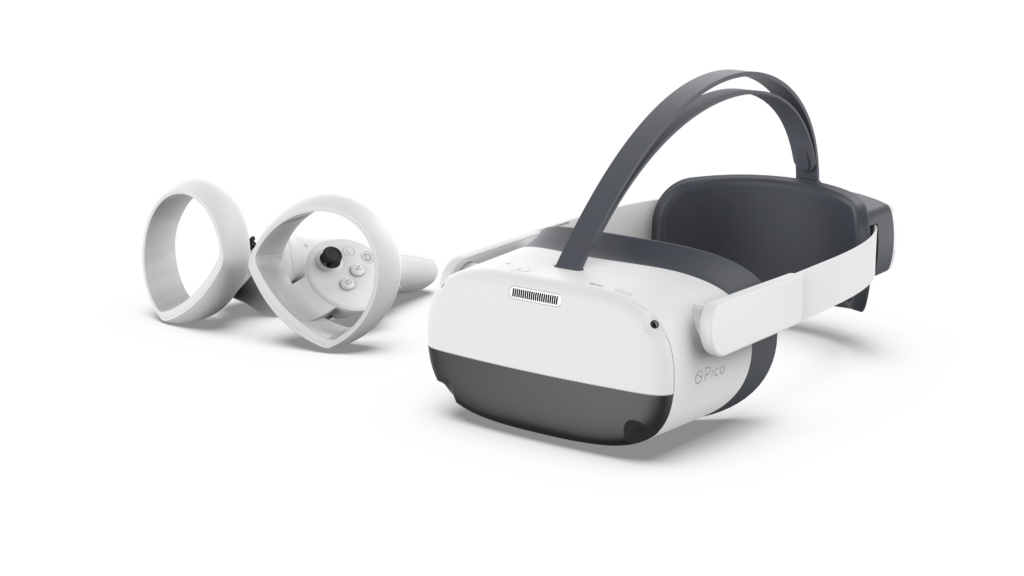As we recently announced the ability to manage Pico VR devices with Cortado MDM, our PR Manager Silke Kluckert spoke with Oliver Wöhler, Commercial Director Northern Europe at Pico Interactive, about the collaboration.

What exactly does Pico do and what differentiates you from other VR players?
Pico Interactive focuses on innovative VR and AR solutions that enable businesses to create and experience the best in VR and Interactive Computer-Generated Imagery (CGI). With offices in the United States, Europe, China and Japan, Pico Interactive focuses on creating amazing VR platforms for any application and is built on the principle of user-first design.
Why partner with Cortado? What is the added value of the collaboration, i.e. MDM for Pico devices?
Pico is purely a developer and manufacturer of VR headsets for enterprises. We focus on providing the most powerful VR platform for a wide range of applications. Crucial to our success is that our VR headsets which are centrally managed by enterprises are brought to life – i.e. through applications and experiences. And this is where Cortado Mobile Solutions comes into play: the MDM technology makes it easier for companies to use and centrally manage VR technology. Some of our customers have up to several hundred Pico headsets in use for training, education, collaboration or research. Manually managing each headset would be uneconomical. With Cortado MDM, the headsets can be managed effortlessly and efficiently with the required software. A great reduction in workload for the IT department.
What industries do your customers come from?
Our customers come from a wide range of sectors, with a clear focus on education and training, automotive and aviation technology, medical technology and healthcare, telecommunications and IT/electronics, banking and finance, and location-based entertainment. But especially during the pandemic of Corona, more and more companies have integrated VR into their business processes.
Do you have any specific examples of what customers are using VR glasses for in the business environment?
Orange Telecommunications, for example, uses our VR headsets in the Virtual Orange Laboratory to train over 1,000 employees. Axel Springer (the largest publishing house in Europe) uses Pico VR glasses in a standardised way for collaboration projects. There are dozens of exciting applications in Germany.
What is the cost-benefit ratio of the applications?
There are various studies on the economic benefits of VR in business processes. At this point, I would like to cite the results of the highly regarded study by PwC from 2020 on the use of VR in education and training. According to this study, employees can be trained up to 4 times faster in VR courses and are more confident in applying the acquired knowledge. Participants felt over 3 times more emotionally connected to the content than face-to-face learners and over 2 times more than e-learners. Finally, employees were up to 4 times more focused during training than e-learners. I believe these results are representative of many other VR application scenarios.

What should IT managers consider who want to use VR?
First of all, they should get rid of their fear of VR. Thanks to providers like Cortado and open management platforms, VR applications in the B2B environment can be created as easily and quickly as PowerPoint presentations. In addition, an open platform architecture and ecosystem that can be seamlessly integrated into corporate IT is important. In industry, our VR glasses are used for numerous projects with highly sensitive data, so security plays an important role. And finally, the glasses must be easy to use: Replaceable batteries, sufficient standalone computing power, fast WiFi and 5G connectivity, and easy disinfection are at the top of our customers’ specifications.
What challenges do companies face when introducing VR?
The challenge is not so much convincing employees of the benefits of VR: anyone who has experienced a VR application is immediately convinced. It is more challenging to understand the great possibilities of VR and to integrate it into company processes. VR is already part of everyday life in some companies – those who want to remain competitive will no longer be able to avoid VR.
How do you see the development of VR in the corporate context in the medium and long term? What is the scale of most projects at the moment? What is the market potential?
The COVID-19 pandemic has acted like a burning glass for the VR industry. A great many companies took the time during the lockdown to initialise and test VR projects. Even after the lockdown, these applications are not disappearing, as companies have quickly realised the benefits. The B2B VR market is booming, the potential is huge. We’re really amazed at the great VR applications that are coming onto the market virtually every day – and we’re only at the beginning of this wave.
Do you also use VR in your spare time?
Of course! What I enjoy most are relaxation applications after long days at work. Just diving into virtual worlds and chilling out, that’s great.
Thank you very much for the interview!
Managing virtual reality headsets safely and easily
The use of innovative VR and AR solutions in your company does not have to be associated with a high administrative effort. With Cortado MDM, you can easily manage VR headsets with the required software and relieve the IT department. Learn more about the advantages of Cortado MDM. You can also test our solution without obligation and free of charge on our website.